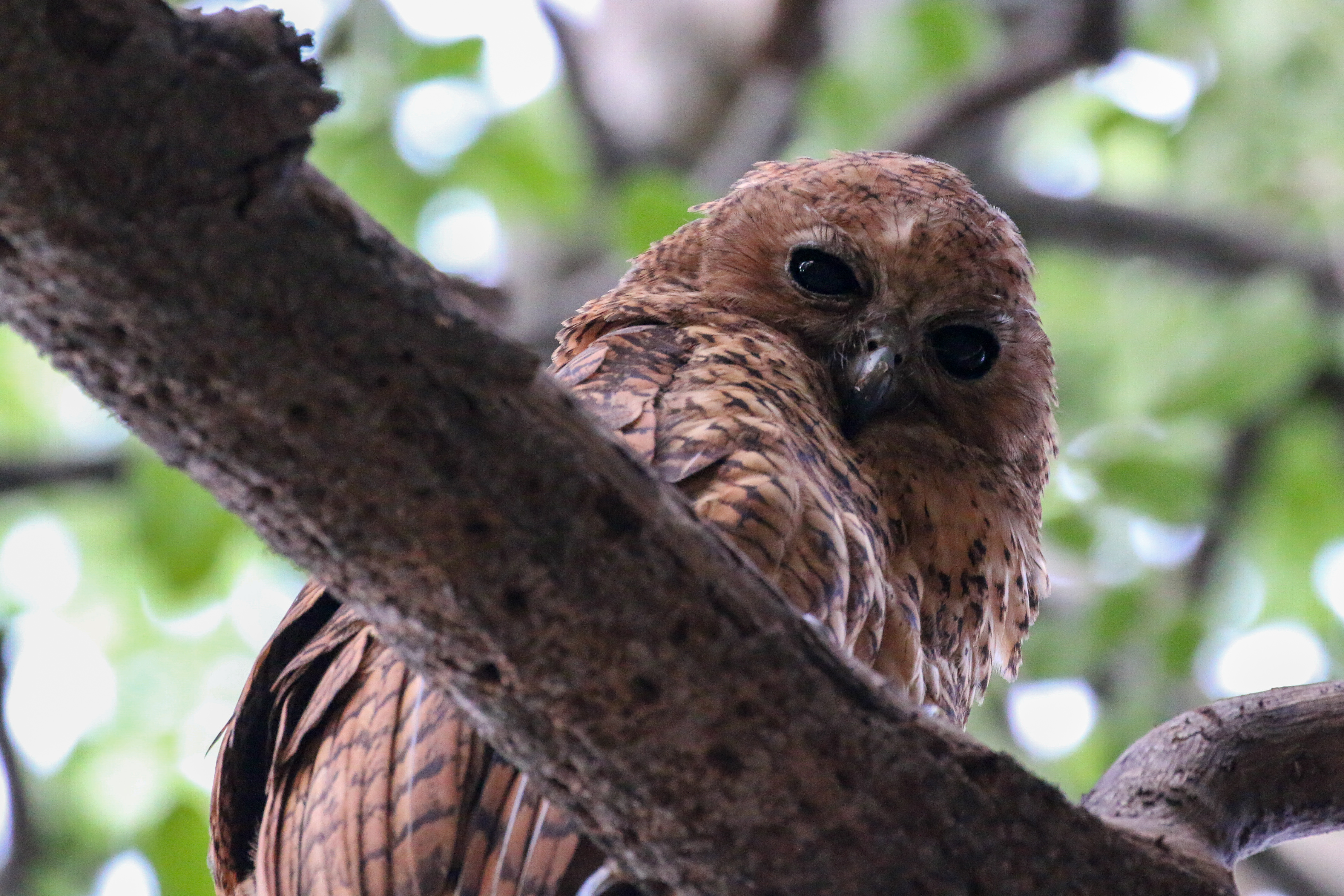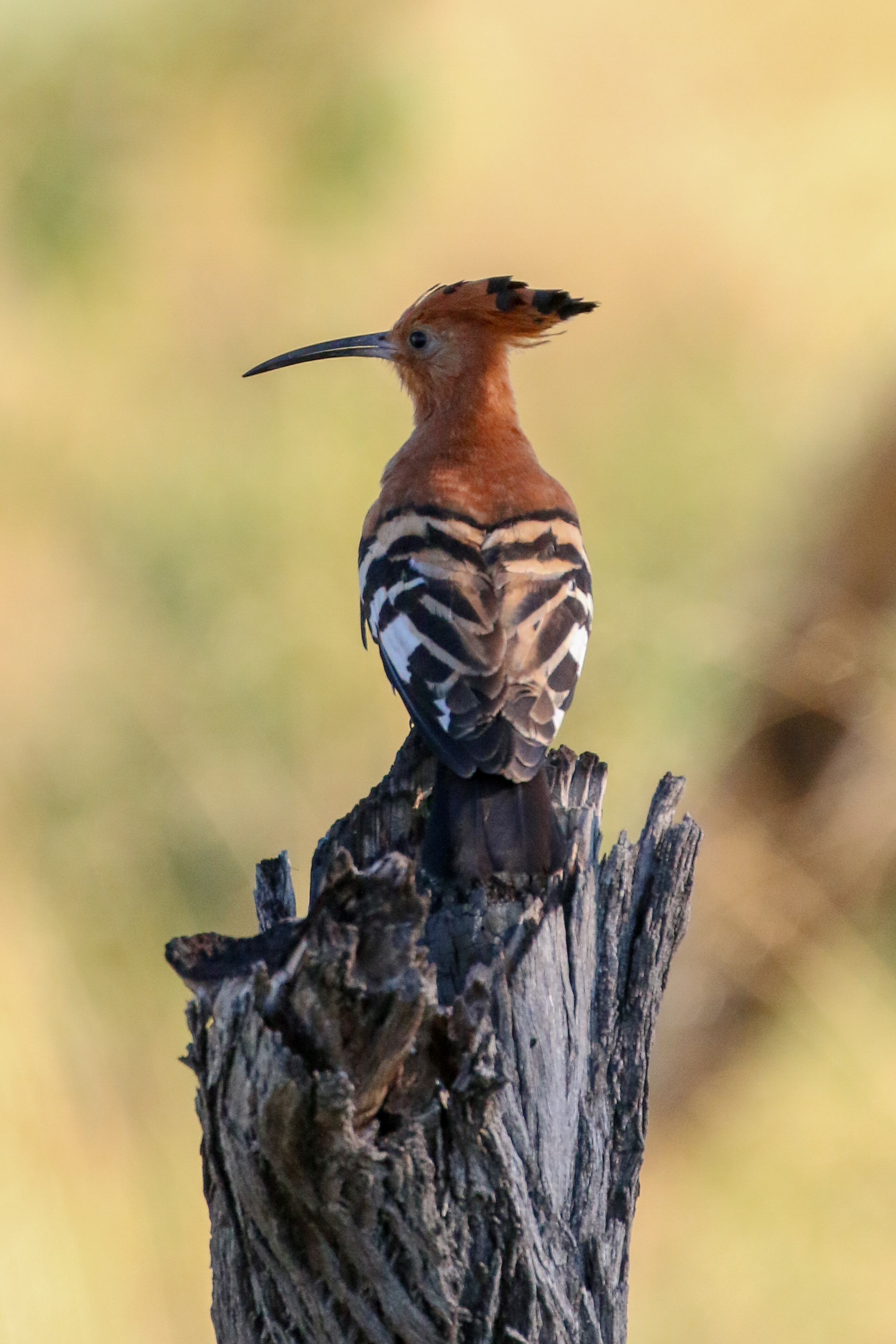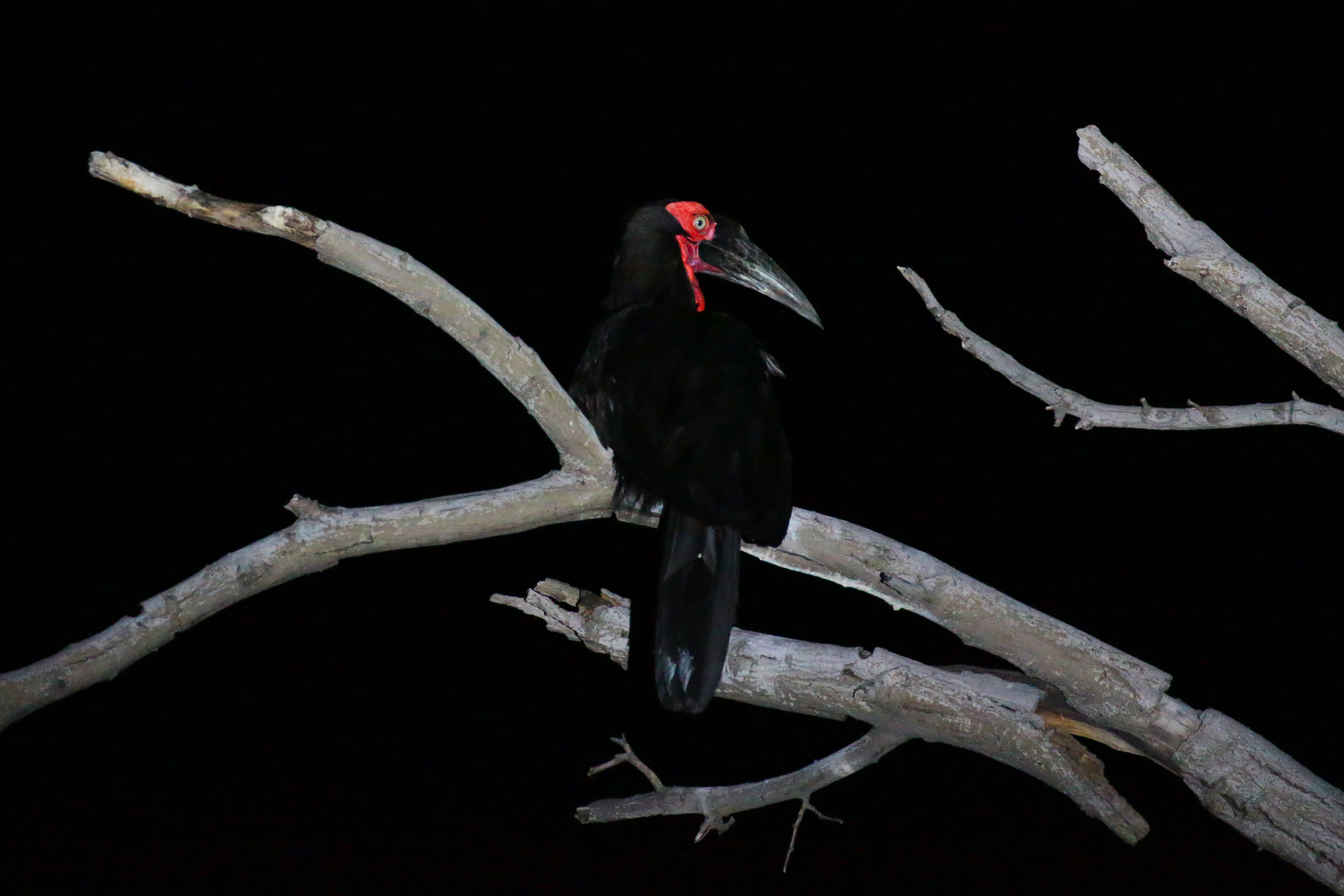While I’m not a hardcore birder—I don’t routinely wake at the crack of dawn to spend time with our feathered friends—I always enjoy getting to know a region’s bird life. Admittedly, I was attracted to this trip by the prospect of seeing larger fauna such as Africa’s fabled big five: lion, leopard, cape buffalo, elephant, and rhino. And although I was ecstatic when we saw each of them, my Botswana adventure was made so much richer by the incredible variety of birdlife we experienced.
In the dry Kalahari the birds are generally less colorful, an adaptation that camouflages them from predators in these exposed grasslands. During our adventure we saw eagles, hawks, kites, and other birds of prey float along on thermals while small songbirds hid in the thorny thickets at the edge of the pans. Larger birds made the grasslands their home, including ostrich, secretary bird, northern black korhaan, and the kori bustard—the national bird of Botswana and the world’s largest flighted bird.
Heading north into the Okavango Delta, the avian diversity reflects the watery environs in which they live. Here we found four varieties of kingfisher, African fish eagles, great white pelicans, spoonbills and egrets, reed cormorants, and African darters. Some we saw from our safari vehicles, while others we witnessed from mokoros—poled canoes that glide quietly over the water. And, while in Xigera, we had the incredible good fortune of spending time with a highly prized birder’s find: the Pel’s fishing owl. This we found on our final day in camp, thanks to the expert eyes of our guides who discovered the owl above the boardwalk at the back of camp. Fortunate for all birding enthusiasts who visit, this particular owl frequents the camp, making sightings likely.

African darter and reed cormorants, Xigera concession, Okavango Delta, Botswana. © WWF-US / Jeff Muller
Along with the water birds, the Okavango is also home to some species we might consider more exotic. Our travels brought us into contact with many colorful birds, including two kinds of bee eater (little and Southern Carmine’s), lilac breasted rollers, Cape glossy starlings, African hoopoes, and three varieties of hornbill. I was constantly in awe of our guides’ knowledge of the birdlife and their incredibly sharp eyes.
Given the abundance of life in Botswana, I’m sure we missed as many birds as we saw. This is not a failing, for there truly is too much to see in just 10 days. It simply provides another reason why a return visit is in order.
By Jeff Muller, WWF
































I will be going to Botswana in September 2018. Was glad to glimpse a sampling of the bird life. Thanks!